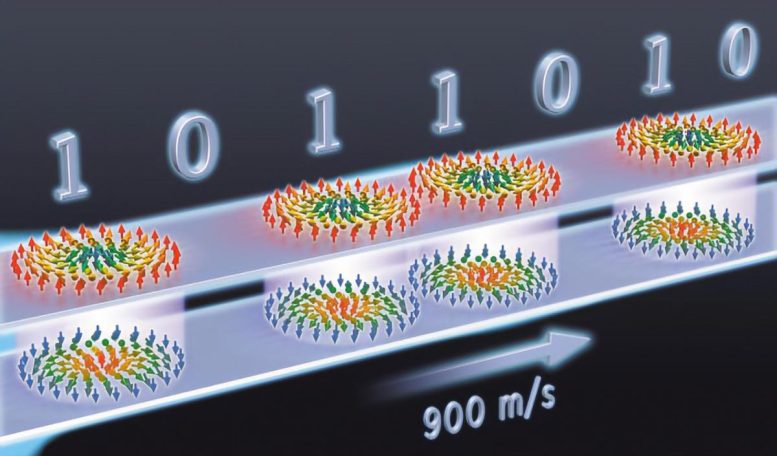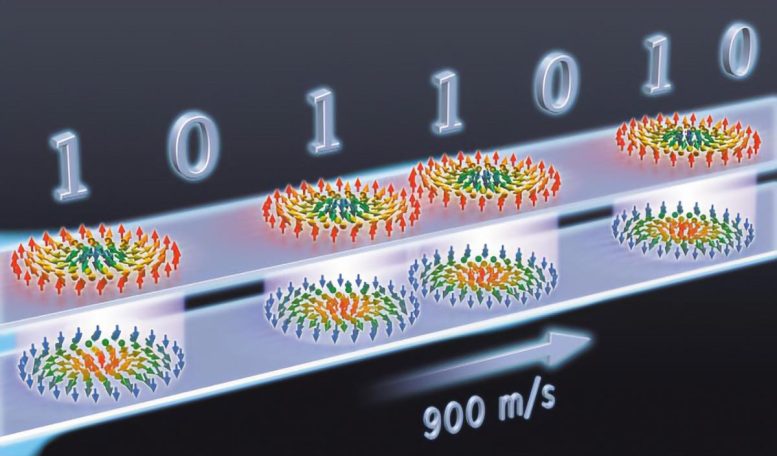

Antiferromagnetic skyrmions moved in a magnetic racetrack by an electrical current. Credit: © Bruno Bourgeois and Olivier Boulle
Scientists discovered that skyrmions, potential future bits for computer memory, can now move at speeds up to 900 m/s, a significant increase facilitated by the use of antiferromagnetic materials.
An international research team led by scientists from the CNRS[1] has discovered that the magnetic nanobubbles[2] known as skyrmions can be moved by electrical currents, attaining record speeds up to 900 m/s.
Anticipated as future bits in computer memory, these nanobubbles offer enhanced avenues for information processing in electronic devices. Their tiny size[3] provides great computing and information storage capacity, as well as low energy consumption.
Until now, these nanobubbles moved no faster than 100 m/s, which is too slow for computing applications. However, thanks to the use of an antiferromagnetic material[4] as medium, the scientists successfully had the skyrmions move 10 times faster than previously observed.
These results, which were published in Science on March 19, offer new prospects for developing higher-performance and less energy-intensive computing devices.
This study is part of the SPIN national research program[5] launched on January 29, which supports innovative research in spintronics, with a view to helping develop a more agile and enduring digital world.
Notes
- The French laboratories involved are SPINTEC (CEA/CNRS/Université Grenoble Alpes), the Institut Néel (CNRS), and the Charles Coulomb Laboratory (CNRS/Université de Montpellier).
- A skyrmion consists of elementary nanomagnets (“spins”) that wind to form a highly stable spiral structure, like a tight knot.
- The size of a skyrmion can reach a few nanometres, which is to say approximately a dozen atoms.
- Antiferromagnetic stacks consist of two nano-sized ferromagnetic layers (such as cobalt) separated by a think non-magnetic layer, with opposite magnetisation.
- The SPIN Priority Research Programme and equipment (PEPR) is an exploratory program in connection with the France 2030 investment plan.
Reference: “Fast current-induced skyrmion motion in synthetic antiferromagnets” by Van Tuong Pham, Naveen Sisodia, Ilaria Di Manici, Joseba Urrestarazu-Larrañaga, Kaushik Bairagi, Johan Pelloux-Prayer, Rodrigo Guedas, Liliana D. Buda-Prejbeanu, Stéphane Auffret, Andrea Locatelli, Tevfik Onur Menteş, Stefania Pizzini, Pawan Kumar, Aurore Finco, Vincent Jacques, Gilles Gaudin and Olivier Boulle, 18 April 2024, Science.
DOI: 10.1126/science.add5751

